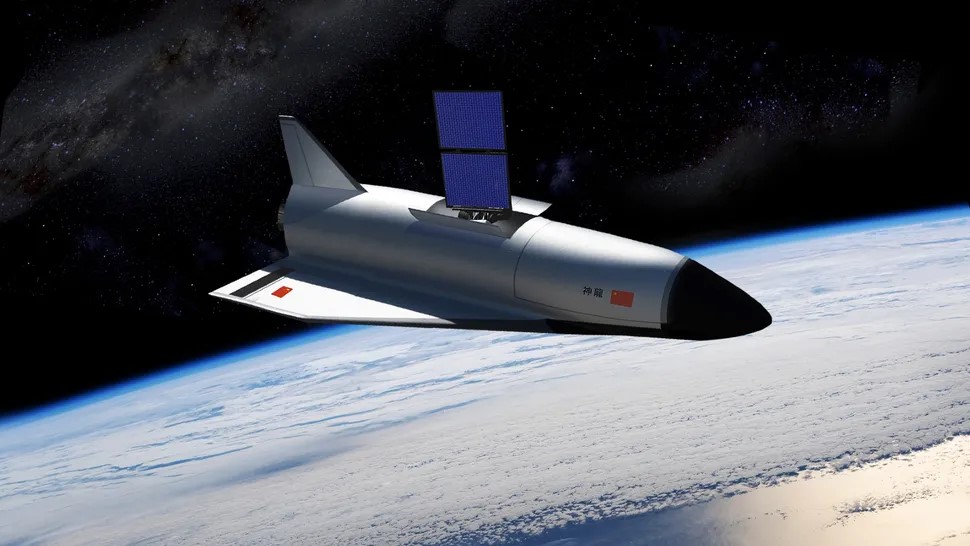China’s reusable space plane just got a little more mysterious.
Just four days after being launched on its third mission, China’s Shenlong (“Divine Dragon”) robotic space plane seems to have placed six objects into Earth orbit. Amateur spacecraft trackers around the world have been following the objects closely for days and have recorded emissions coming from some of them.
The six mystery objects have been designated OBJECT A, B, C, D, E and F. According to satellite tracker and amateur astronomer Scott Tilley, OBJECT A appears to be emitting signals reminiscent of those emitted by objects that China’s space plane has released on previous missions.
“OBJECT A’s or nearby emission is reminiscent of earlier Chinese space plane ‘wingman’ emissions in the sense the signal is modulated with a limited amount of data,” Tilley told Space.com via email. “There is speculation that the emission from OBJECT A may be from an object close to it, but this is speculation not based on any evidence I’m aware of.” Tilley has referred to the objects as “mysterious wingmen” on X (formerly Twitter).
OBJECT D and E, meanwhile, appear to be emitting idle “placeholder” signals with no data accompanying them. “It should be noted that unlike emissions early in the Chinese space plane missions 1 and 2, these emissions are very intermittent and do not stay on long,” Tilley says. “It’s taken days of observations tracking pass after pass with dish antennas to come up with this data.”
Tilley and other satellite trackers have analyzed the signals and are confident that the emissions are coming either from the objects or from close proximity to them. This conclusion is based on observing them along their expected paths in the sky, the fact that no other known objects were in the beam of the trackers’ antennas when the data was collected, and the fact that the particular modulation of these signals is “unique and has only been seen from previous Chinese space plane missions using [a frequency of] 2280MHz,” Tilley says.
“In summary, this iteration of the Chinese space plane mission launched into a similar orbit as the last two but operationally it is exhibiting different radio behavior than before. The additional observations of the emissions from OBJECT D and E is new, but could also have been missed on earlier missions if they too were intermittent,” Tilley added. “Something we should watch for is close encounters between OBJECT A and OBJECTs D and E. D and E are in fairly elliptical orbits while A is in a near circular orbit. In the next couple of days there will be close approaches between these objects at perigee.”
Perigee is the point in a satellite’s elliptical orbit when it’s closest to Earth.
China’s space plane has exhibited similar behaviors in the past. On its two previous missions — which launched in September 2020 and August 2022, respectively — the spacecraft was seen releasing a small unknown object into orbit. It was speculated that the objects could be service modules, test articles for practicing placing payloads into orbit, or perhaps even small satellites used to monitor the space plane, SpaceNews wrote in November 2022.
The United States also operates a reusable robotic space plane, the Boeing-built X-37B. Similar to China’s Shenlong space plane, little is known about the exact operations or capabilities of the X-37B. The U.S. Space Force is currently set to launch the spacecraft atop a SpaceX Falcon Heavy rocket on Dec. 28 after several delays.
And the timing of the two reusable space plane launches isn’t a coincidence. “These are two of the most watched objects on orbit while they’re on orbit. It’s probably no coincidence that they’re trying to match us in timing and sequence of this,” General Chance Saltzman, U.S. Space Force’s Chief of Space Operations, said at a conference earlier this month.
Credit: Space.com



